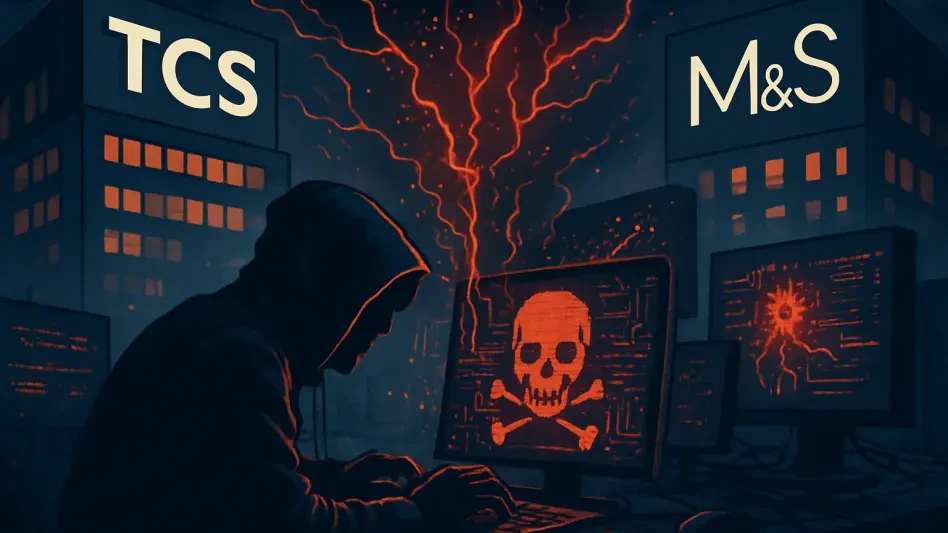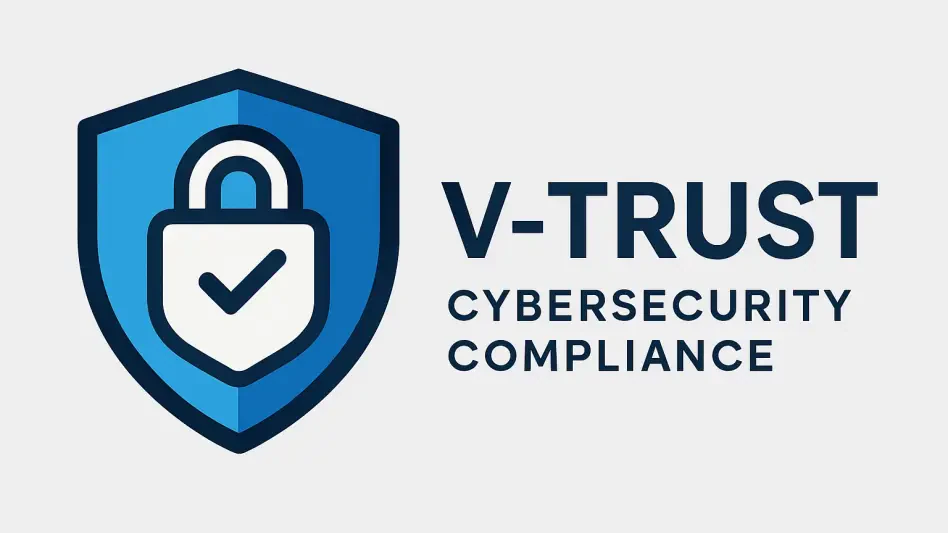The cyber warfare market is poised for significant growth in the coming years, driven by the increasing sophistication of cyber threats and the global reliance on technology. With organizations becoming more interconnected, the scope for cyberattacks has dramatically expanded, leading to a surge in demand for advanced cybersecurity solutions. This article delves into the key insights and industry trends projected for 2025 and beyond, providing valuable information for market players, investors, and stakeholders aiming to gain a competitive edge in this rapidly evolving field.
Market Growth and Size
Projected Market Expansion
The global cyber warfare market size was valued at $37.5 billion in 2022 and is projected to reach $127.1 billion by 2032, growing at a compound annual growth rate of 13.3% from 2023 to 2032. This substantial increase reflects the heightened need for sophisticated cybersecurity measures amid a rise in advanced cyberattacks. As businesses and public entities continue to digitize their operations, relying heavily on information technology, the necessity for robust cybersecurity measures becomes even more critical. This increased dependence on digital frameworks not only enhances the efficiencies of these operations but also extends the attack surface that cybercriminals can exploit, necessitating stronger defenses and contributing to market growth.
The acceleration in market size can be attributed to multiple factors, including the proliferation of connected devices and the expansion of the Internet of Things (IoT). The modern corporate landscape has also been decentralized by cloud computing, further solidifying the integral role of cybersecurity in protecting digital assets. As organizations across various sectors endeavor to bolster their cybersecurity postures, this demand will propel the market forward, driving an environment ripe for innovation in cybersecurity solutions. Consequently, as the digital transformation trend continues worldwide, the cyber warfare market is expected to thrive, offering myriad opportunities for growth and investment.
Technological Dependence and Cyber Threats
Today’s organizations are increasingly dependent on interconnected systems and technological advancements to optimize their operations and achieve efficiency. However, this growing reliance has also made them more susceptible to cyber threats. The escalating frequency and complexity of cyberattacks have led to a heightened awareness of the critical need for advanced cybersecurity solutions. Companies are now more cognizant than ever of the financial and reputational damages that could result from cyber breaches, prompting substantial investments in cybersecurity measures. This trend underscores the importance of adopting a proactive approach to cybersecurity to safeguard critical data and assets.
As businesses continue to integrate technology into their core operations, the risk of cyber threats looms larger. These attacks are not merely increasing in frequency but are becoming more sophisticated, with cybercriminals deploying advanced techniques to bypass traditional defense mechanisms. The pervasive nature of these threats necessitates advancements in cybersecurity measures to stay ahead of potential adversaries. The ongoing evolution of cyber threats reinforces the need for continuous innovation and vigilance in cybersecurity. This challenge presents a lucrative opportunity for cybersecurity companies to develop state-of-the-art solutions capable of countering these sophisticated threats, thus driving the market’s growth.
Drivers and Opportunities
Surge in Advanced Cyberattacks
A significant driver for the growth of the cyber warfare market is the surge in advanced cyberattacks. Cybercriminals are constantly developing more sophisticated techniques to infiltrate cyberspace, making it imperative for organizations to adopt robust cybersecurity measures to protect their digital infrastructure. This surge in cyber threats has heightened awareness of cybersecurity’s critical importance, prompting organizations across various sectors to increase their investment in advanced cybersecurity solutions. The continuous evolution of cyberattack strategies necessitates a corresponding advancement in defense mechanisms to ensure the security of sensitive data and critical systems.
The financial and reputational damages inflicted by successful cyberattacks are substantial, encouraging businesses to prioritize cybersecurity in their strategic planning. This pattern of increasing cyber threats has spurred a larger market demand for cutting-edge cybersecurity solutions capable of outpacing the sophisticated tactics employed by cybercriminals. Advanced cybersecurity defenses, including AI-driven security systems and real-time threat detection, are becoming essential components of organizational infrastructure. As a result, the cyber warfare market is set to benefit from sustained investments in cybersecurity, which will drive considerable growth and innovation in the solutions offered.
Technological Advancements and Connected Systems
The rapid advancement of technology and the growing reliance on connected systems present significant opportunities for the cyber warfare market. As organizations adopt new technologies and integrate interconnected systems into their operations, the need for robust cybersecurity solutions becomes increasingly critical. The expansion of IoT, in particular, has introduced numerous vulnerabilities that cybercriminals can exploit, necessitating advanced security measures to protect these connected ecosystems. Furthermore, advancements in artificial intelligence and machine learning are being leveraged to develop sophisticated cybersecurity solutions capable of identifying and mitigating threats in real time.
The interconnected nature of modern technological systems extends the potential attack surface for cyber adversaries, demanding continuous innovation in cybersecurity to stay ahead of these threats. As businesses seek to enhance their operational efficiencies and gain a competitive edge through technological advancements, the importance of cybersecurity cannot be overstated. Organizations are increasingly recognizing the value of investing in state-of-the-art cybersecurity solutions to safeguard their digital assets and maintain trust with their stakeholders. This trend is expected to drive substantial market growth as the adoption of advanced technologies and connected systems continues to rise, creating new opportunities for cybersecurity innovation.
Challenges in the Cyber Warfare Market
Shortage of Real-Time Information
One of the significant challenges in the cyber warfare market is the shortage of shared real-time information regarding rapidly evolving threats. The lack of timely and accurate threat intelligence can impede organizations’ capacity to respond effectively to cyber threats. In an environment where cyber threats are continually evolving, the ability to access and share real-time information is crucial for maintaining robust cybersecurity defenses. Effective threat intelligence sharing can enable organizations to anticipate potential attacks, develop strategic responses, and mitigate the impact of cyber threats. However, achieving this level of information sharing requires improved collaboration among cybersecurity stakeholders.
The challenge of real-time information shortage necessitates a collaborative approach to cybersecurity, where entities across sectors work together to share threat intelligence and best practices. Building robust networks for information sharing can help bridge the gap and provide organizations with the timely insights needed to counteract emerging threats. Additionally, the development of advanced threat intelligence platforms can facilitate the aggregation and dissemination of crucial threat data, empowering organizations to enhance their cybersecurity strategies. Addressing this challenge is essential for bolstering the overall resilience of the cyber warfare market in the face of increasingly sophisticated cyber threats.
Insufficiently Trained Workforce
Another notable challenge facing the cyber warfare market is the insufficiently trained workforce capable of addressing new and emerging threats. The rapid evolution of cyber threats requires continuous training and upskilling of cybersecurity professionals to stay abreast of the latest developments and defense strategies. However, there is a significant gap in the availability of skilled cybersecurity personnel, which hinders organizations’ ability to effectively combat cyber threats. Closing this skills gap necessitates substantial investments in training programs and initiatives aimed at developing a highly skilled cybersecurity workforce capable of navigating the complexities of modern cyber threats.
Organizations must prioritize the development of cybersecurity talent through comprehensive training programs, certifications, and hands-on experience to ensure their teams are equipped to handle sophisticated threats. Collaboration with academic institutions and industry bodies can also play a crucial role in fostering a pipeline of skilled cybersecurity professionals. Additionally, leveraging advanced technologies such as AI and machine learning can aid in the detection and mitigation of cyber threats, potentially compensating for the shortfall in human expertise. Addressing the challenge of an insufficiently trained workforce is vital for the continued growth and effectiveness of the cyber warfare market.
Market Segmentation
Component Segmentation
The cyber warfare market is segmented into three primary components: hardware, software, and services. Each segment plays a critical role in the overall cybersecurity ecosystem, catering to different aspects of cyber defense. In 2022, the hardware segment accounted for a significant share of the market due to its specialized equipment designed for cyber warfare operations. Hardware solutions, such as sophisticated firewalls, intrusion prevention systems, and secure communication devices, are integral to fortifying an organization’s cyber defenses and ensuring the security of critical infrastructure.
However, the software segment is anticipated to experience the fastest growth in the coming years. Software solutions offer diverse capabilities, including data analysis, vulnerability assessment, and intrusion detection and prevention. These solutions are essential for proactive threat management, enabling organizations to identify and respond to cyber threats promptly. Advancements in artificial intelligence and machine learning have further enhanced the capabilities of cybersecurity software, making it a vital component in the defense against sophisticated cyberattacks. As organizations increasingly rely on software-based solutions to bolster their cybersecurity measures, this segment is expected to drive significant market growth.
End User Segmentation
The cyber warfare market is divided into various end-user segments, each with unique cybersecurity requirements. These segments include government, corporate and private sectors, aerospace and defense, BFSI (Banking, Financial Services, and Insurance), healthcare, and others. The aerospace and defense sector held a substantial market share in 2022 due to its utilization of cybersecurity solutions to mitigate threats and share information with government agencies. This sector’s critical nature necessitates robust cybersecurity measures to protect sensitive data and maintain national security.
The BFSI segment is expected to witness the fastest growth owing to the rapid adoption of digitalization and Fintech mobile apps. As financial institutions increasingly rely on digital platforms to deliver services, they become prime targets for cybercriminals seeking to exploit vulnerabilities. Consequently, the BFSI sector has been investing heavily in advanced cybersecurity solutions to safeguard financial transactions and sensitive customer information. Similarly, the healthcare sector’s growing reliance on digital health records and telemedicine services has underscored the need for stringent cybersecurity measures to protect patient data. Each end-user segment presents unique challenges and opportunities, driving the demand for tailored cybersecurity solutions.
Regional Analysis
The cyber warfare market is analyzed across several regions, including North America, Europe, Asia-Pacific, and LAMEA (Latin America, Middle East, and Africa). In 2022, North America led the market, driven by the widespread use of smartphones, enhanced internet connectivity, and a sophisticated IT infrastructure. The region’s strong focus on cybersecurity, coupled with significant investments in advanced technologies, has positioned it at the forefront of the cyber warfare market. Additionally, North America’s proactive approach to cybersecurity regulations and policies has further bolstered its market leadership.
However, the Asia-Pacific region is projected to grow at the fastest rate due to the increasing adoption of connected systems and the pursuit of improved operational efficiencies and security outcomes. The region’s rapid digital transformation and expanding internet user base have created substantial opportunities for cybersecurity investments. Countries such as China, India, and Japan are at the forefront of adopting advanced cybersecurity solutions to protect their burgeoning digital economies. Furthermore, regional collaborations and initiatives aimed at enhancing cybersecurity resilience are expected to drive market growth in Asia-Pacific, making it a key area of focus for cybersecurity stakeholders.
Industry Developments
Recent Upgrades and Developments
Recent industry developments have seen significant upgrades and advancements in cybersecurity capabilities, underscoring the continuous innovation within the cyber warfare market. For instance, BAE Systems demonstrated cognitive electronic warfare and cyber warfare capabilities during Northern Edge 2023. This demonstration highlighted the integration of advanced technologies such as artificial intelligence and machine learning in enhancing cybersecurity defense mechanisms. Similarly, Cisco Systems Inc. has bolstered its cybersecurity portfolio by introducing new AI-driven solutions, including the extended detection and response (XDR) system and advanced features for Duo multi-factor authentication (MFA).
These developments reflect the industry’s commitment to staying ahead of emerging cyber threats through continuous improvement and innovation. The incorporation of AI and machine learning into cybersecurity solutions enables more effective threat detection and response, offering organizations a proactive stance against potential cyberattacks. As cyber threats continue to evolve, the need for sophisticated and adaptive cybersecurity solutions becomes increasingly critical. The recent upgrades and advancements in the cyber warfare market serve as a testament to the industry’s resilience and capacity for innovation.
Recent Expansions and Product Launches
The cyber warfare market has also witnessed notable expansions and product launches that underscore the industry’s commitment to advancing cybersecurity technologies. L3Harris Technologies, Inc. secured a contract from Lockheed Martin to develop a new advanced electronic warfare system for the F-16 aircraft. This contract represents a significant step forward in enhancing the cybersecurity capabilities of military aircraft, ensuring the protection of critical systems from potential cyber threats. Additionally, BAE Systems launched a comprehensive cybersecurity system designed for F-16 aircraft, supporting various onboard systems and bolstering the aircraft’s overall defense mechanisms.
Raytheon Technologies introduced RAIVEN, a high-tech electro-optical intelligent-sensing capability that enhances threat identification for pilots. These expansions and product launches reflect the industry’s proactive approach to addressing emerging cyber threats and safeguarding critical infrastructure. The continuous development of advanced cybersecurity solutions is essential for maintaining the security and resilience of both civilian and military operations. As the cyber warfare market continues to evolve, such innovations will play a crucial role in shaping the future of cybersecurity.
COVID-19 Impact on Cybersecurity
Increased Cyberattacks During the Pandemic
The cyber warfare market is set for substantial expansion in the next few years, fueled by the escalating complexity of cyber threats and the worldwide dependence on digital technology. As organizations become increasingly interconnected, the potential for cyberattacks has significantly grown, resulting in a heightened demand for sophisticated cybersecurity measures.
This article explores the pivotal insights and industry trends anticipated for 2025 and beyond, offering crucial information for market participants, investors, and stakeholders who aim to achieve a strategic advantage in this rapidly advancing sector. Key factors contributing to this growth include the integration of artificial intelligence in cybersecurity, the rise of state-sponsored cyber activities, and the need for robust defense mechanisms to protect critical infrastructure.
Moreover, the growing awareness of cyber risks has led to increased regulatory pressures, pushing organizations to adopt cutting-edge security solutions. Companies in the cyber warfare market must stay ahead of these trends to secure a competitive position. By understanding these dynamics, businesses can better prepare for future challenges and opportunities, ensuring they remain resilient amid the evolving cyber threat landscape.





